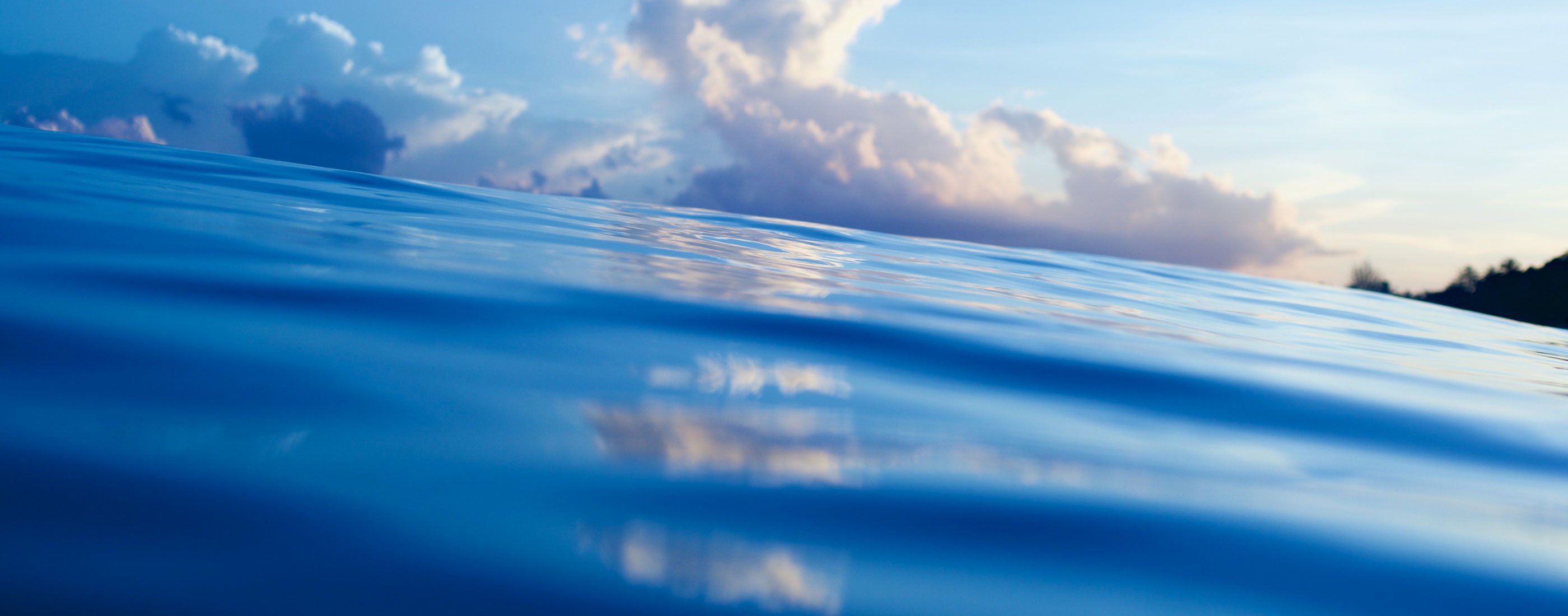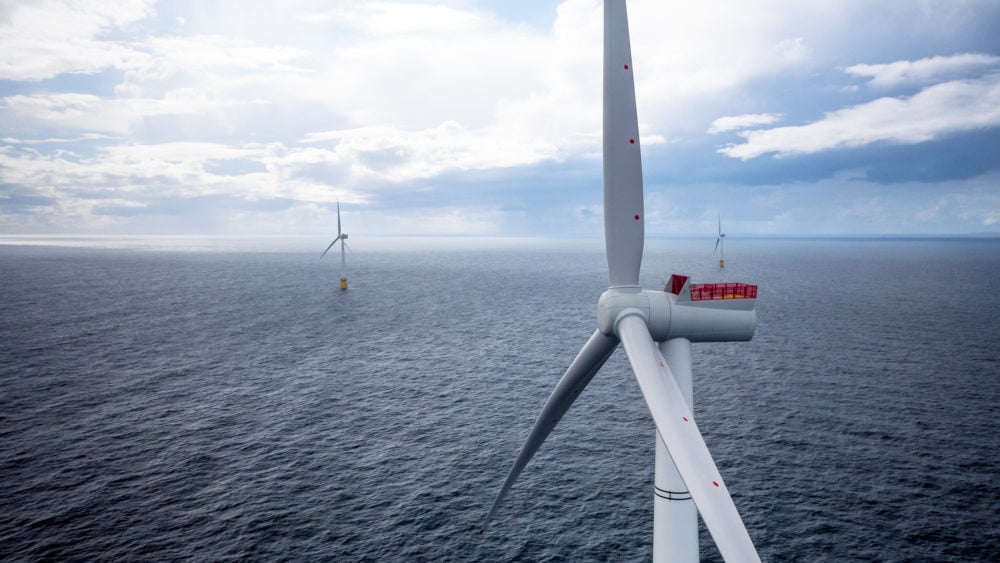
Climate and Clean Energy Programs
At Surfrider, our mission is to prevent further drastic changes to our ocean, waves, and beaches by reducing emission of greenhouse gases and to adapt responsibly to changes already occurring. Here on the Central Coast, we have a number of proposed offshore wind farms, port infrastructure, and energy storage facilities to consider.
Surfrider has worked on offshore wind projects in other regions and our participation will help address potential impacts to the environment and coastal users. We will also be evaluating how this may affect the proposed Chumash National Marine Sanctuary.
Offshore Wind
Offshore wind (OSW) energy refers to the use of wind turbines in the ocean to generate electricity. A group of interconnected wind turbines is referred to as a wind farm. As the U.S. seeks to develop renewable, homegrown, and cost-effective energy sources, we’ve seen a surge in proposed offshore wind energy projects. See Benefits of Clean Energy Projects
For a good overview of how OSW is developed and regulated click the video below.
As of 2022, there are seven operating offshore wind farms in the U.S., but many new wind energy projects are being proposed, ranging in size from four to 180 turbines each. As this industry expands, it’s essential to understand both the benefits and negative impacts offshore wind farms can have on our marine environment, coastal economies, and recreational use areas.
Put simply, because of the dangerous threats to our coast from climate change, the Surfrider Foundation supports offshore wind energy development if it is done right. See Offshore Wind Benefits.
Given that offshore wind is such a new technology, projects are evaluated on a case-by-case basis by Surfrider’s network of chapters. Surfrider Foundation actively seeks to communicate scientific information to the community to educate them about offshore wind development. See Offshore Wind Impacts.
Ensuring Equitable and Sustainable Offshore Wind Solutions
SLO Surfrider promotes the socially and environmentally responsible execution of proposed offshore wind generation projects off of the SLO coast. It is our mission to advocate for the best interests of the ocean, wildlife and local economies during the green energy transition. We work alongside local and regional environmental, community-based groups, and meet with offshore wind companies to ensure that the interests of the affected communities are heard and issues with marine and wildlife are addressed. We are dedicated to acting in accordance with the Surfrider Foundation’s rinciples of justice, equity, diversity and inclusion.
To achieve these goals we are working to develop educational materials to increase public awareness of the factual information needed to weigh the costs and benefits of offshore wind development n the Morro Bay Wind Energy Area (MBWEA). See the current draft of our PowerPoint presentation on the issues. We are building strong, resilient working relationships with other community groups and organizations to ensure that we are progressing into a green future in a way that lets all voices be heard. We will build our collaboration from the ideals we share, namely, to protect and serve our communities and our environment. We will collaborate using our shared knowledge, expertise, resources and collective opportunities.

Port Infrastructure for Offshore Wind
The installation of the proposed wind farm off the coast of San Luis Obispo County will require a deep water port. The components of the windmills can only be transported by ship because the blades are too large for surface transport. The components will be assembled at a port and then towed out to the wind farm site.
There are three types of port terminals that will be needed to develop offshore wind.
1) Staging and Integration Facilities - to receive, stage, store, assemble, load out offshore wind components
2) Manufacturing/Fabrication Sites - receive raw materials and create components that are large and can only be transported on water
3) Operations and Maintenance Facilities - these are smaller facilities and should be close to the wind farm
Several extensive port infrastructure studies are in progress:
1) SLO County’s plans for $1 million in state funding for infrastructure, engagement with the three winning offshore wind developers and coordination with both the state AB 525 planning process and
2) the federal West Coast Port Strategy Study that NREL is leading. Community dialogue and engagement with tribal, fishing and other Central Coast stakeholders will be essential in exploring these options further.
Coastal Energy Storage Projects
Several energy storage projects are being considered in SLO County. Currently, the only one actively seeking a permit is the proposed Vistra – Morro Bay Battery Energy Storage System (BESS) would be located on the site of the closed Morro Bay Power Plant, near Morro Rock. The power plant closed in 2014.It would store 600 megawatts and be the largest battery storage facility in the world. Here is a Vistra presentation to the Morro Bay City Council in February 2021. In June 2021, the Morro Bay City Council approved a binding Memorandum of Agreement with Vistra to move the project forward. Vistra will need to seek approvals from San Luis Obispo County, the California Coastal Commission and the California Independent System Operator (CAISO
Vistra is the developer of the Moss Landing Battery Storage Facility, which went online in December 2020. Sierra Club supported this project. In September 2021, scorched lithium-ion battery packs and melted wires were discovered – there was lots of smoke but no fire.
S.T.O.P Climate Change
Climate Change and the Ocean
What are the primary threats to our ocean, waves, and beaches caused by human-induced climate change?
- Sea Level Rise
Sea levels are projected to rise by at least one vertical foot by 2035. This will result in 50-100 feet of beach loss and will be further exacerbated by high tides and more severe storms. - Temperature Rise
Ocean warming, due to increasing heat-trapping Co2 is causing coral bleaching and reef die-off, thus damaging reef breaks and marine life. - Ocean Acidification
Ocean acidification is the decrease in the pH of the water caused by excess Co2 in the atmosphere, disrupting shell calcification and impacting the global ecosystem.

What Is Climate Change?
Climate change is caused by greenhouse gases (GHGs) that trap heat in our atmosphere.
What are the primary sources of the greenhouse gas emissions that are causing sea level rise, temperature rise, and ocean acidification?
- Electricity and heat production
- Industry
- Agriculture, forestry, and other land use
- Transportation
- Buildings
- Other Energy
Ways You Can Help
- Transport
Drive as little as possible and drive the most fuel-efficient vehicle you can afford! Carpool and combine trips whenever you can. - Diet
Reduce your emissions by eating less meat, choosing plant-based options when possible, limiting dairy, choosing sustainable seafood, and avoiding palm oil. - Home
Consume less energy: Dry clothes in the sun, turn off the AC, have “unplugged” tech-free days, buy a solar powered phone charger. Take short showers, use rain barrels and recycle grey water. - Conscious Consumerism
Only buy things you need, buy secondhand whenever you can, and swap boards, wetsuits, and clothes with other people in your community. - Activism
Research politicians to make sure those you vote for take action against climate change! And get involved with our program.
How Does Surfrider Fight Climate Change?
See this PowerPoint Presentation on Surfrider's Climate Change Solutions.
